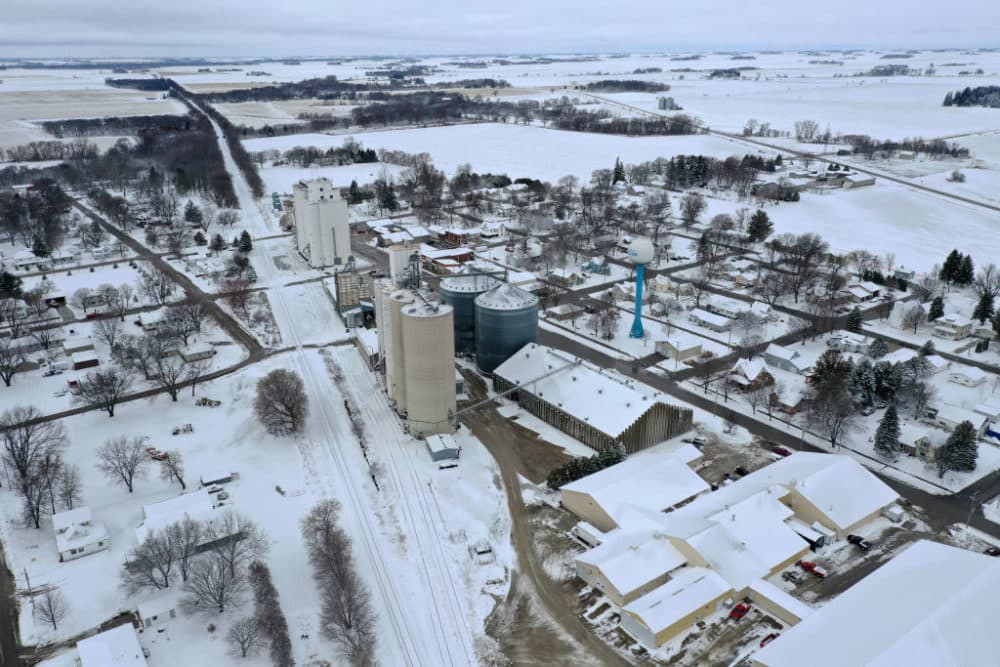Advertisement
In Iowa, Small Towns With Declining Populations Learn To 'Shrink Smart'
Resume
Small towns across America have long wondered how to stop population loss, but lately, more have been turning to another way to cope with people leaving.
“Smart shrinkage” is used to maintain the quality of life after a city loses residents and businesses.
Researchers Kimberly Zarecor, professor of architecture at Iowa State University, and David Peters, associate professor of sociology at Iowa State University, measured quality of life in 99 communities across Iowa.
“Shrinking smart is where we look at communities that have had faster than average declines in population, but conversely, faster than average gains in quality of life,” Peters says.
Interview Highlights
On what “shrinking smart” means
Peters: “We look at census data to measure population declines. And then we have an ongoing poll at Iowa State called the Iowa Small Town Poll that goes back to the early ‘90s. So we've been tracking 99 small towns in Iowa since the early 1990s. That's how we measure the quality of life.”
On why these communities are shrinking in the first place
Peters: “Like much of the Corn Belt, the Great Plains and the Midwest, the main cause of shrinkage is out-migration due to decline in traditional rural industries due to global trade automation and consolidation in both the industrial sector and the agricultural sector.
“Shrinking places were built to serve a late 19th to 20th-century economic system that doesn't exist. And of course, agriculture, mining, forestry and manufacturing operate quite differently in the 21st century. The economic purpose of a lot of these small towns is disappearing and the people along with it as they migrate to larger cities for jobs and other amenities.”
On how to improve the quality of life when jobs and people go away
Zarecor: “Some of the things that we have found are working in these communities are building social capital. And what we mean when we say social capital are the connections between people, the relationships in town, building up a leadership group that includes multi-generational leaders.
“We see a lot of private philanthropy in these communities. These are people who live there and who are giving money specifically to programs in the community. And what we found is this is creating a new kind of social network that makes people feel very connected to the place. They want to be there with their family, but also their friends and their neighbors. And they're interested in the future of the town.
“One of our great predictors of smart shrinkage is when you ask people if they're optimistic about the future in their town, they tell you that they are.”
On whether these findings can apply to towns outside of Iowa
Peters: “We believe so, particularly towns in the Midwest and the Great Plains where shrinkage is most severe. We think that the findings in Iowa would apply generally to agricultural and manufacturing towns in that area. It probably isn't going to apply too much to towns in the West where they have a high degree of natural amenities and there's a lot of federal land. But definitely in the worst shrinking areas in the Midwest and Great Plains and to a lesser extent toward the Great Lakes states and to Ohio and western Pennsylvania. We think that these strategies would apply quite well.”
On suggestions for civic leaders whose communities are shrinking
Peters: “Get residents to give more of their time and more of their money to local projects. Get people involved in local organizations, allow new people to take leadership roles, support new leaders in pursuing new ideas and accept that failure will occur but keep trying whatever you do. Network with groups outside of your community to get new ideas and know-how. And finally, remember that your town can still be a thriving community despite population loss.”
Zarecor: “And I think one of the most important messages we want to send is that the growth narrative, that only growth is positive, is something that we think some towns have to get past because the trends show that it's simply not going to happen. So the question is what to do when you're in a town that's shrinking. We want you to have some choices and some energy and optimism and not only focus on the population numbers.”
On how state and federal governments can help cities and towns shrink in a smart way
Peters: “I would say there is in mainly providing grant funds [and] matching funds to community foundations. One thing we did find in our work is that most projects were led by community groups, not by the government. And there were a number of reasons for that, but the primary one is a lot of federal dollars and state dollars come with strings attached and oftentimes it's the priorities of the state and federal government, not the priorities of the community.
"So I would say a role for the state is to offer either matching funds with few restrictions and allow communities to identify those needs, but have government be a helper, but not a leader of those projects.”
This segment aired on December 16, 2019.
